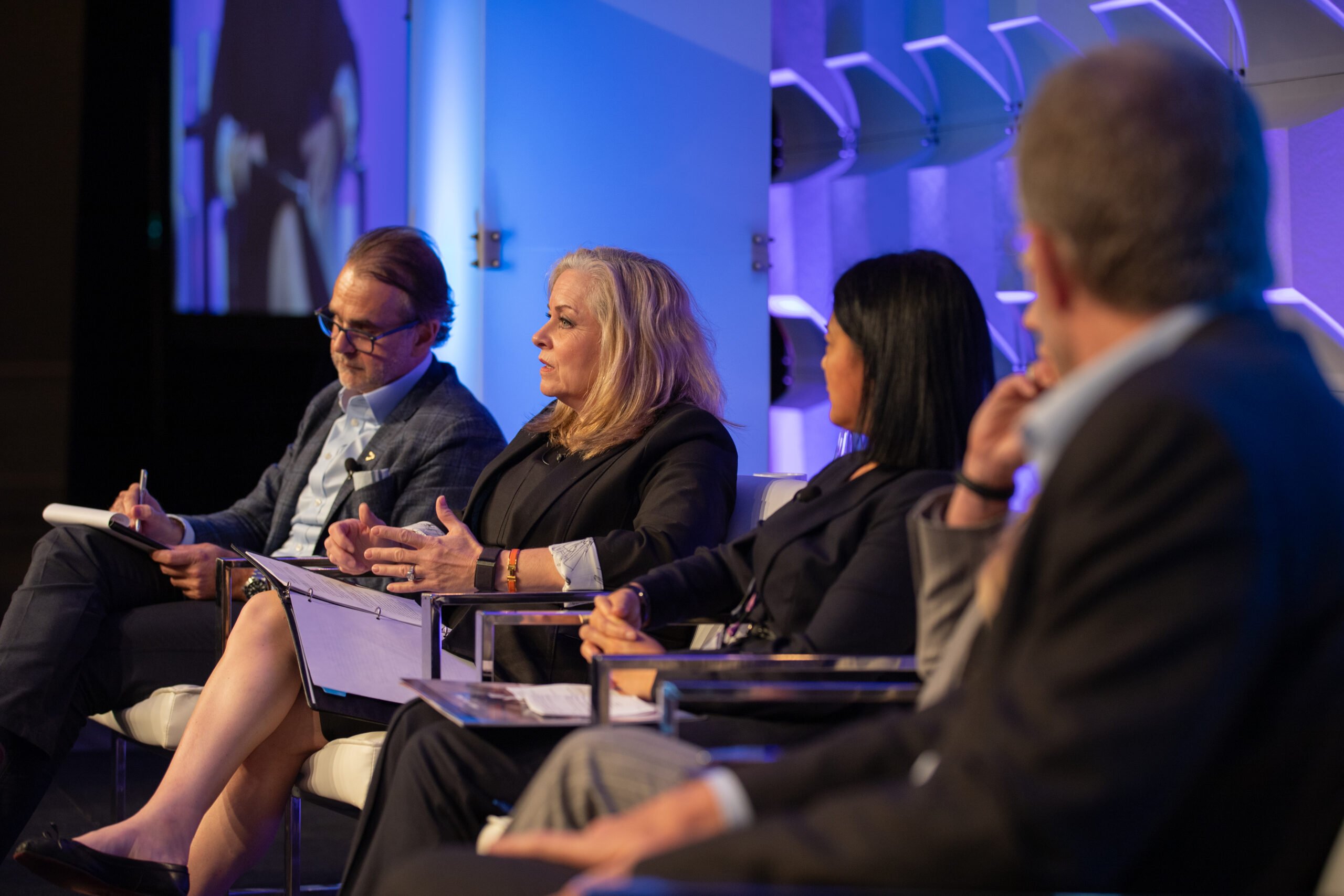
Burnout around diversity, equity, and inclusion (DEI) is top-of-mind for today’s DEI practitioners, but some CEOs are filled with energy.
A panel of C-suite leaders from across the banking, oil, transportation, manufacturing, and consulting industries shared five ways that leaders everywhere can accelerate change and prevent DEI fatigue at the 2023 Catalyst Honours session, “From the Front Line to the C-Suite: Bringing Everyone on Your DEI North Star Journey.”
When asked about how her views on DEI metrics were changing, Linda Hasenfratz, Executive Chair & CEO of Linamar Corporation, emphasized the importance of both macro- and micro-level measurement. She said, “You can’t just [look at] the macro measurement of women in management. [You have to look at it] level by level…discipline by discipline, country by country, [and] plant by plant [sic] in our situation, to really understand the underlying story. I’ve always been a big believer in that because I think it’s the fallacy of an average. ” Across the board, the panelists agreed. Moderator David Morgenstern, President, Accenture Canada, summarized, “That’s a great challenge to all of us when we look at metrics and go, ‘Good, we’re green.’ It’s like, hang on. We probably know fundamentally we’re not green. We have to go and continue to push not just the measurement but also what is actually being measured.”
Look for growth in the so-called ‘dark corners.’
In these challenging times, CEOs often deal with backlash over diversity, equity, and inclusion statements and actions. It can be easier to surround ourselves with like minds, but Susannah Pierce, President and Country Chair, Shell Canada Limited challenged leaders to actively seek out those who are not engaging in these conversations. “There’s still pockets of [our] organization that are not willing to engage. And that’s what I’m looking for. That’s where the growth is. That’s where the learning is. And … that stubbornness is also what we’re seeing externally in society, which I think will continue to be … polarized and volatile for some time to come.” Phil Verster, President & CEO of Metrolinx, agreed, reminding us to all use our light and “radiate out what’s important to us as a [company], then those dark corners will be reached by different parts of the organization.”
When in doubt, think again.
When asked about DEI fatigue, Catalyst Honours Champion Jeahnette Cavaliere, Canada Country Manager of Wells Fargo, pushed leaders to continue to evolve their tactics. She said, “The fatigue might be: ‘Are we doing the same things and achieving the same or less results?’ What’s important for us is to look at the perspective of: who’s receiving training, who are the recipients of the message that you’re trying to get to? Are you saying the same message or are you doing the same thing over and over again? I look at fatigue from that perspective and think, how do we refresh ourselves? It’s really important to always regroup, take a step back and see are we achieving that result?”
Build a bridge over fear.
As the DEI landscape becomes more nuanced and interwoven with our social and political lives, Morgenstern reflected on the fear that commonly takes hold of leaders. “I think particularly in the C-suite and as leaders of organizations, sometimes we can get it wrong. Sometimes we can be so concerned about getting it right that we don’t actually do what’s necessary.”
Pierce agreed and encouraged leaders to look at failures as a useful tool to help identify where fear is hiding in their organizations. She recounted how the lack of response to a survey allowed her to understand and identify areas of improvement. “We could really focus on the organization and what some of those fear motivations were for people not willing to engage. That’s what we have to overcome. At the end of the day, fear is the most influential emotion we have, bar none. If we can actually engage peer to peer and [we] can overcome that initial fear and have a conversation, [we’re] beginning to build the bridge.”
Try the carrot, not the stick.
At the end of the day, it’s also important to recognize that people have different priorities and motivations, so a range of tactics is needed to push for progress. Cavaliere touted the efficacy of tying performance and compensation to DEI goals as a way to drive change. “I can hold someone from a compensation perspective accountable. So, if you’re not motivated enough by doing the … right thing…Now I can … hold you accountable and [say] ‘This is what it’s going to mean to you from a compensation-result perspective.’”
Hasenfratz closed the panel with a note on the power of perception and positivity:
“If you hear about everybody getting on the bus and achieving something, doesn’t that make you want to do it too? But if you hear, ‘there’s not enough’, [or] ‘nobody’s doing this’–why would you do it? My biggest takeaway that I hope you take is to be more positive about the progress we’ve made. Talk about the progress and talk about it in a positive way so that we get more people on the bus.”




![What Is An Alternative Education Program? Preparing Students For The Future [2024 DEI Resources]](https://diversity.social/wp-content/uploads/2023/01/Best-employers-for-Family-friendly-diversity-certification.png)
